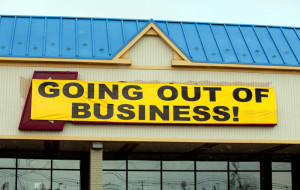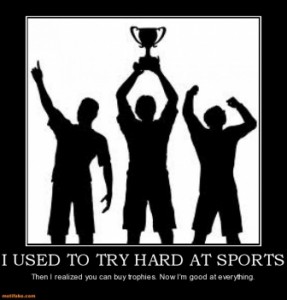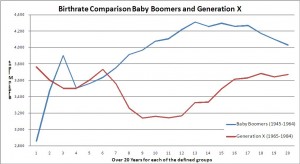For the last six years I’ve been writing and speaking around the country to business owners about the coming tsunami of retiring Baby Boomer business owners. My e-book “Beating the Boomer Bust” details the statistics (For a free download, go here and enter the seminar attendee password “Woodstock”), but the numbers are inescapable.
According to www.bizbuysell.com the brokerage industry reports the sale of less than 8,000 small (under 500 employees) companies each year. There are between five million and six million such businesses in the USA that are owned by Boomers between 48 and 68 years old. That makes business owners about 7% of the Boomer generation (78,000,000).
By 2018, Boomers will be reaching their 65th birthday at a rate of 8,000 a day. That pencils out to over 550 business a day reaching a logical point of sale. At current volumes, the brokerage industry can handle from January 1st almost through January 15th of every year. The other eleven and a half months you are on your own.
There are hurricanes, super storms, and perfect storms. The arrival on the ownership scene of GenX and the Millennials, who have less money and less enthusiasm for 60-hour work weeks, makes the wave of retiring owners a super storm. The need of big businesses to replace their retiring Boomers by offering higher salaries, better benefits and more flexibility make it into a perfect storm.
 Of course, business brokers and the burgeoning industry of exit planning professionals (disclosure: I am certified in both) intend to cash in on the wave of sellers by vastly increasing their businesses. Even with a shortage of buyers, I’m sure they can double or triple their number of successful sales. Tripling would reduce the number of unsold businesses to only 485 per day. That’s 20 small companies with employees unsold hourly… 24/7/365. Do the math.
Of course, business brokers and the burgeoning industry of exit planning professionals (disclosure: I am certified in both) intend to cash in on the wave of sellers by vastly increasing their businesses. Even with a shortage of buyers, I’m sure they can double or triple their number of successful sales. Tripling would reduce the number of unsold businesses to only 485 per day. That’s 20 small companies with employees unsold hourly… 24/7/365. Do the math.
Of course, not all of the companies that change hands sell through business brokers. Some are passed on to families. Many are acquired privately, with accountants or attorneys facilitating the transactions. Others are sold to employees.
For small business owners, the third option, selling to employees, is too often the option of last resort. Owners ask their legal and financial advisors what to do. They prepare their company for sale (for a really solid new book on getting your company ready for a third-party sale check out The Exit Strategy Handbook by Jerry L. Mills). They list the business on the Internet or with a broker.
For any number of reasons, the business doesn’t sell. Perhaps they don’t have enough time because the owner is burned out or ill. Their return on assets is too low, or their industry outlook is poor. The financial markets are tight, or there are just too many other businesses available for a limited number of buyers.
Finally, in desperation, they “sell” the business to employees for an installment note. In some ways these transactions often resemble the subprime mortgage market. The employees really aren’t qualified to grow the business. They need a job, and the terms can be stretched to any length to fit the cash flow available, so they are willing to sign whatever looks sustainable. If they don’t make the payments, the only recourse is for the owner to take back a company that he doesn’t want, and whose value has declined.
It’s a bad way to get rid of a company, but for many owners it is the only one they have left. It doesn’t have to be that way. We will talk about the alternatives next week.



